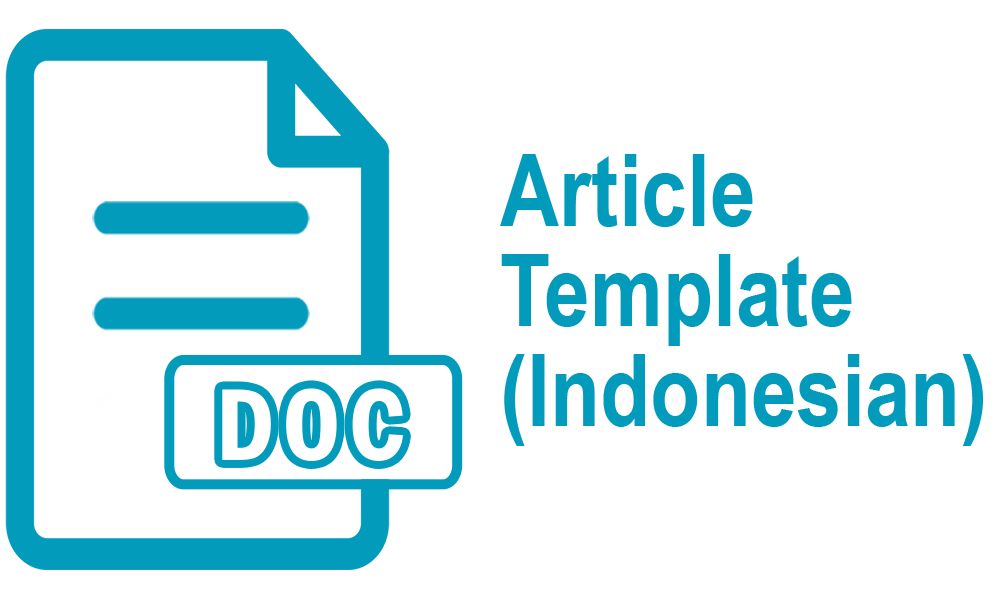Tere Liye’s Reader in Makassar: Community, Class, and the Social Construction of Literary Taste
Abstract
This article examines how young readers in Makassar construct and perform literary taste through their engagement with Tere Liye’s popular fiction. Employing Bourdieu’s concepts of field, habitus, and capital, and drawing on in-depth interviews, the study traces how taste is formed at the intersection of family background, school environment, peer networks, religious values, and the symbolic power of the marketplace. The findings reveal that, in contrast to Bourdieu’s classic model, family cultural capital does not neatly determine taste; instead, most participants, regardless of class, encounter fiction through schools and communities rather than at home. Organizational life and reading groups emerge as crucial spaces where social capital is accumulated, boundaries of taste are formed, and readers gain recognition and belonging. The commercial dominance of publishers and bookstores further shapes what is visible and legitimate, while the motivational and Islamic themes in Tere Liye’s work respond to both neoliberal aspirations and religious ideals. The study highlights the importance of recognizing the agency of readers, the plural sources of legitimacy, and the uneven structures that frame literary taste in contemporary Indonesia, especially Makassar.
Full Text:
PDFReferences
Abidin, Z. (2020). Building trust in qualitative research: An overview. International Journal of Research in Social Sciences, 10(5), 345–355.
Atkinson, W. (2016). Class, habitus and the field of consumption. Routledge.
Berger, R. (2015). Now I see it, now I don’t: Researcher’s position and reflexivity in qualitative research. Qualitative Research, 15(2), 219–234. https://doi.org/10.1177/1468794112468475
Bourdieu, P. (1977). Outline of a theory of practice (R. Nice, Trans.). Cambridge University Press.
Bourdieu, P. (1984). Distinction: A social critique of the judgement of taste (R. Nice, Trans.). Harvard University Press.
Bourdieu, P. (1993). The field of cultural production: Essays on art and literature. Columbia University Press.
Bourdieu, P. (1996). The rules of art: Genesis and structure of the literary field (S. Emanuel, Trans.). Stanford University Press.
Braun, V., & Clarke, V. (2006). Using thematic analysis in psychology. Qualitative Research in Psychology, 3(2), 77–101. https://doi.org/10.1191/1478088706qp063oa
Bryman, A. (2016). Social research methods (5th ed.). Oxford University Press.
Creswell, J. W., & Poth, C. N. (2018). Qualitative inquiry and research design: Choosing among five approaches (4th ed.). Sage.
Duangdee, T. (2024). Literary community activism in Makassar: Bookstores and grassroots networks. Journal of Southeast Asian Cultural Studies, 9(1), 51–65.
Elias, A., & Gill, R. (2018). Beauty surveillance: The digital self-monitoring cultures of neoliberalism. European Journal of Cultural Studies, 21(1), 59–77. https://doi.org/10.1177/1367549417705604
Fathiyah, S., Anshari, I. I., & Juanda, R. (2025). Popular fiction and student meaning-making: Tere Liye’s Bandit-Bandit Berkelas in Makassar. Makassar Literary Studies Review, 5(1), 18–32.
FilmIndonesia.or.id. (n.d.). Statistik penonton film Indonesia. https://filmindonesia.or.id
Friedman, S., Laurison, D., Miles, A., & Savage, M. (2019). Breaking the “class ceiling” in cultural taste: Social mobility, Bourdieu and contemporary Britain. Sociology, 53(2), 307–326. https://doi.org/10.1177/0038038518786877
Friedman, S., & Reeves, A. (2020). From aristocratic to ordinary: Shifting modes of elite distinction. American Journal of Cultural Sociology, 8(2), 231–259. https://doi.org/10.1057/s41290-020-00109-0
Grenfell, M. (2014). Pierre Bourdieu: Key concepts (2nd ed.). Routledge.
Guest, G., MacQueen, K. M., & Namey, E. E. (2006). Applied thematic analysis. Sage.
Hanquinet, L. (2022). Revisiting Bourdieu’s theory of taste: From distinction to omnivorousness. Poetics, 93, 101668. https://doi.org/10.1016/j.poetic.2022.101668
Heryanto, A. (2011). Upgraded piety and pleasure: The new middle class and Islam in Indonesian popular culture. In N. Sakai & H. Kang (Eds.), Rethinking identity in modern Indonesia (pp. 60–75). Kyoto University Press.
Heryanto, A. (2013). Identity and pleasure: The politics of Indonesian screen culture. NUS Press.
Hilkey, J. (1997). Character is capital: Success manuals and manhood in Gilded Age America. University of North Carolina Press.
Hughes, C. (2024). Reading cultures in contemporary Indonesia: The case of Makassar’s independent bookstores. Southeast Asian Studies, 13(2), 207–222.
Janet, S. (2013). Islamic media and commercial strategies: Republika’s publishing initiatives. Jakarta Media Journal, 7(1), 27–41.
Jenkins, R. (1992). Pierre Bourdieu. Routledge.
Kuipers, G. (2022). Cultural globalization and the transformation of taste: Revisiting Bourdieu in a global age. International Journal of Cultural Studies, 25(3), 321–337. https://doi.org/10.1177/13678779211028442
McGee, M. (2005). Self-help, inc.: Makeover culture in American life. Oxford University Press.
McGuigan, J. (2014). The neoliberal self. Culture Unbound: Journal of Current Cultural Research, 6, 223–240. https://doi.org/10.3384/cu.2000.1525.146223
Noy, C. (2008). Sampling knowledge: The hermeneutics of snowball sampling in qualitative research. International Journal of Social Research Methodology, 11(4), 327–344. https://doi.org/10.1080/13645570701401305
Pratiwi, A. N. (2016, March 3). Akun Facebook Tere Liye diblokir, begini penjelasan Facebook. Kompas.com. https://tekno.kompas.com/read/2016/03/03/14240077/Akun.Facebook.Tere.Liye.Diblokir.Begini.Penjelasan.Facebook
Rani, I. (2012). Islamic novels and new reading publics in Indonesia. Jurnal Komunikasi Islam, 2(1), 57–70.
Republika. (2022, October 12). 20 tahun menulis, Tere Liye cetak 7 juta buku. https://www.republika.co.id/berita/rk2vca380/20-tahun-menulis-tere-liye-cetak-7-juta-buku
Rinaldo, R. (2022). Pious and prosperous: Consumption, class and Islamic popular culture in Indonesia. International Journal of Cultural Studies, 25(3), 347–361. https://doi.org/10.1177/13678779221097084
Rocamora, A. (2002). Fields of fashion: Critical insights from Bourdieu’s sociology. Journal of Consumer Culture, 2(3), 341–362. https://doi.org/10.1177/146954050200200303
Sasono, E. (2010). Moral modernity and neoliberal subjectivity in Indonesian popular fiction. Inter-Asia Cultural Studies, 11(1), 54–68. https://doi.org/10.1080/14649370903507987
Setiawan, I., & Jati, W. R. (2022). Islamic fiction and the changing Indonesian middle class: Aspirations, identity, and consumption. Asian Journal of Social Science, 50(3), 276–297. https://doi.org/10.1163/15685314-bja10034
Sitomorang, B. (2012). Literary criticism in crisis: Reviewing the state of literary taste in Indonesia. Indonesian Literary Review, 4(1), 88–101.
Swartz, D. (2022). Bourdieu’s theory of fields: Rationality and the rule of the game. Annual Review of Sociology, 48, 207–224. https://doi.org/10.1146/annurev-soc-031421-120220
Tempo. (2021, November 29). Tere Liye: Penulis Indonesia dengan cetakan tertinggi. Tempo Magazine. https://magz.tempo.co/read/164993/tere-liye-penulis-indonesia-dengan-cetakan-tertinggi
DOI: http://dx.doi.org/10.30872/jbssb.v9i3.21359
Refbacks
- There are currently no refbacks.
Copyright (c) 2025 Harry Isra Muhammad, Faisal Oddang, Nasrullah -
Editorial address:
Fakultas Ilmu Budaya, Universitas Mulawarman
Jl. Ki Hajar Dewantara, Gunung Kelua, Kec. Samarinda Ulu, Kota Samarinda, Kalimantan Timur, Indonesia 75123
Email: jurnalilmubudaya.fibunmul@gmail.com
Website: http://e-journals.unmul.ac.id/index.php/JBSSB
Ilmu Budaya: Jurnal Bahasa, Sastra, Seni, dan Budaya is licensed under a Creative Commons Attribution-ShareAlike 4.0 International License






